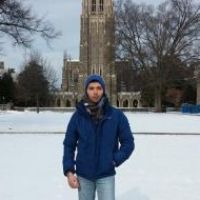Calabrese et al., 2017
Stochastic dynamics of clay translocation and formation of argillic horizons
Calabrese, Salvatore, Daniel deB. Richter, Amilcare M Porporato (2017)
American Geophysical Union 2017 Fall Meeting, New Orleans, Louisiana, 11-15 December 2017
-
Calhoun, INVESTIGATOR
-
Calhoun, INVESTIGATOR
-
Calhoun, INVESTIGATOR
Abstract
The formation of argillic horizons in vertical soil profiles is mainly attributed to lessivage, namely the transport of clay from an upper E horizon to a deeper illuviated horizon. Because of the long timescales involved in this phenomenon, quantitative modeling is useful to explore the role of clay lessivage on soil formation and sub-surface clay accumulation. The limitations of detailed models of colloidal transport to short timescales make it necessary to resort to simple models. Here, we present a parsimonious model of clay transport in which lessivage is interpreted stochastically. Clay particles approach the soil surface at a speed equal to the erosion rate and are intermittently transported to deeper soil layers when percolation events occur or removed by erosion. Along with the evolution of clay particles trajectories, the model predicts the vertical clay profile, the depth of the B horizon, and the mean time to erosion. Dimensional analysis reveals the two dimensionless parameters governing the dynamics, leading to a new classification of soil types based on erosion rates and intensity of lessivage.
Citation
Calabrese, Salvatore, Daniel deB. Richter, Amilcare M Porporato (2017): Stochastic dynamics of clay translocation and formation of argillic horizons. American Geophysical Union 2017 Fall Meeting, New Orleans, Louisiana, 11-15 December 2017.
 This Paper/Book acknowledges NSF CZO grant support.
This Paper/Book acknowledges NSF CZO grant support.
Explore Further



